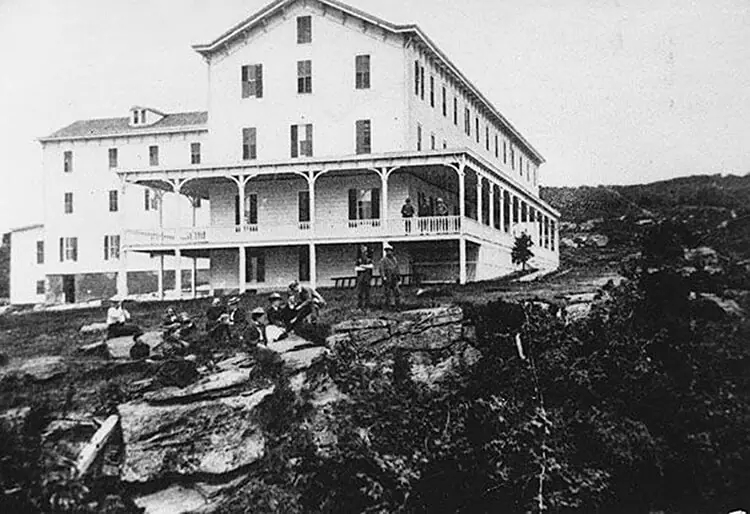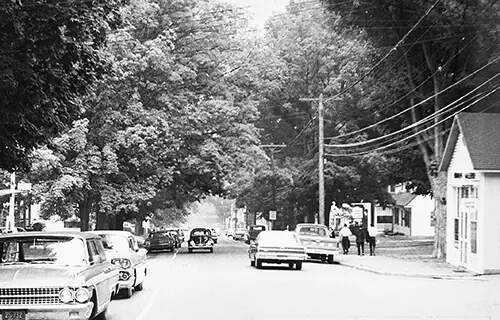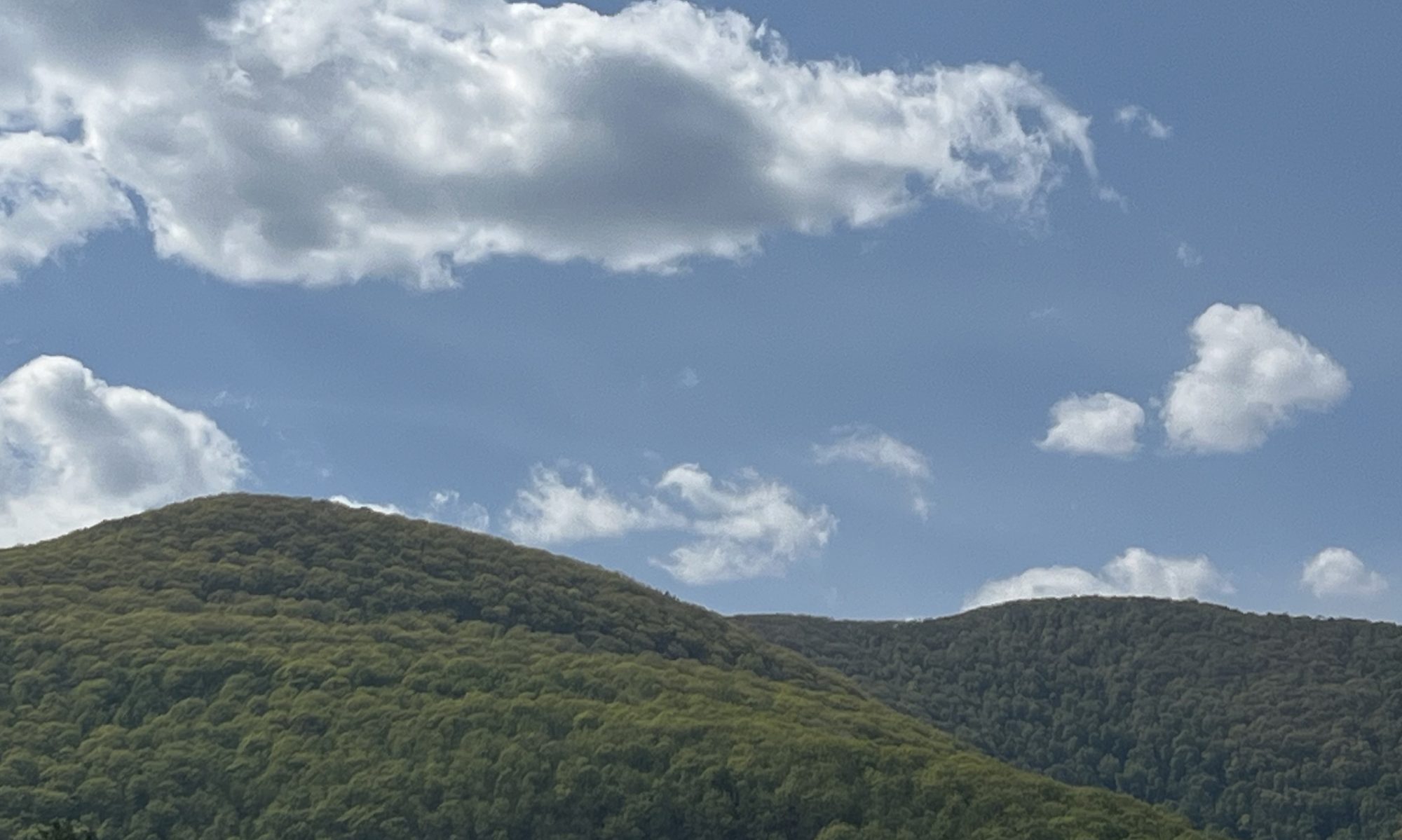Before speaking to the history of What we know as Woodstock, New York, we recognize and honor the surviving Tribal Nations and those who were displaced in the founding. of this country. We seek to advance community understanding about the First Nations of this land and include their voices in the telling of our history, we will share as we learn.
A first place to begin is with the Two Row Wampum belt— the symbolic record of the first agreement between Europeans and American Indian Nations on Turtle Island/North America. 2013 marked the 400th anniversary of this first covenant, which forms the basis for the covenant chain of all subsequent treaty relationships made by the Haudenosaunee and other Native Nations with settler governments on this continent. The agreement outlines a mutual, three-part commitment to friendship, peace between peoples, and living in parallel forever (as long as the grass is green, as long as the rivers flow downhill and as long as the sun rises in the east and sets in the west). Throughout the years, the Haudenosaunee have sought to honor this mutual vision and have increasingly emphasized that ecological stewardship is a fundamental prerequisite for this continuing friendship. Here are links to some documents with more detailed background information. We seek to uphold those principles and recognize that we are all visitors to this land.
Below is the writing of Woodstock Historian, Richard Hepner.
To understand the one constant in Woodstock’s history as we know it, we need only to glance upward at the face of Overlook Mountain. There, in its gentle slopes, you will find the beacon that has summoned the creative spirit and the unique individualism that has filled the pages of Woodstock’s story throughout the years.
Speaking on the Mountain… Please enjoy a (lengthy but engaging) wonderful conversation with beloved Father Francis, who built the tiny church on the top of Meads Mountain Road. His open heart and nurturance of diversity were immeasurable pillars in the foundation of what makes Woodstock, “Woodstock” as we know it.

Artist at Work on Green

Rose’s Store, 1890
Woodstock’s early history, in many respects, was not unlike most small towns across New York. Prior to the arrival of the first white settlers in the mid-1700s, Native Americans once traversed the trails along the Sawkill Creek to reach the Overlook hunting grounds. Officially settled in 1787 along what was then the western frontier of the state, Woodstock’s first settlers cleared the land, fashioned homes out of the timber they cut and began farming the rocky soil. By the 1800’s, however, the economic focus of the town began to shift towards more industrial ends. In 1809, in addition to the sawmills and gristmills already operating along Woodstock’s many streams, the first glass factory was built in the hamlet of Shady. By the 1830’s, tanning, which required a plentiful water supply and tanic acid obtained from hemlock trees, found both resources in abundant quantities in Woodstock. With urban expansion in the mid-nineteenth century, Woodstockers also turned to quarrying bluestone along the base of Overlook and Ohayo Mountain for shipment to cities such as New York and Philadelphia.

Overlook Mountain House
By the latter part of the 19th century, Woodstock’s economic attention ultimately turned towards what others saw in the natural beauty of the land rather than what could be taken from it. With the construction of hotels such as the Overlook Mountain House and Mead’s Mountain House, those seeking to escape the heat and unhealthy air of New York City during the summer began to find their way to Woodstock.
A transforming chapter in Woodstock’s history began in 1902 when, on a spring day, a man by the name of Bolton Brown emerged from the thicket near the summit of Overlook Mountain and first viewed Woodstock and the expanse below him. Employed, along with Hervey White, by Ralph Whitehead to seek a physical location that would match Whitehead’s vision for a utopian art colony, Brown, upon beholding the vista before him wrote of that moment, “Exactly here the story of modern Woodstock really begins.”
With the founding of Whitehead’s Byrdcliffe colony in 1903, the arts had arrived in Woodstock. In addition to Byrdcliffe, Hervey White would go on to establish the Maverick art colony in 1905, while the Art Students League, led by Birge Harrison, would begin operation in Woodstock a year later. As a result, Woodstock’s story began to diverge from the small town norm, eventually becoming a community shaped by the connections forged between newly arrived artists and those who drew life and livelihood from the very landscape that would find its way onto a multitude of canvases over the years. In the decades that followed, other institutions would continue to add to Woodstock’s cultural landscape, including, in 1920, the Woodstock Artists Association – now known as the Woodstock Artists Association and Museum, the Historical Society of Woodstock (1929), The Woodstock Guild of Craftsmen (1939), now a part of the Byrdcliffe Guild, the Woodstock School of Art (1968) which currently occupies a complex of massive bluestone and timber studios built by the Federal Government as a crafts training center before World War II, and the Center for Photography at Woodstock (1977), housed in a building that Bob Dylan once called home.

Allen Family at Maverick Festival

Early Village Green

Woodstock Playhouse
In 1938, the Woodstock Playhouse became one of the first rural extensions of Broadway in the nation, having grown from the vision of Robert Elwyn, a descendent of one of Woodstock’s oldest families. Elwyn emerged from his work as an actor, director and theater manager at the Maverick Theater as an independent visionary. Chronicled in the pages of American Theatre History, dramatic presentations at the Woodstock Playhouse have been immortalized by artist Al Hirschfeld and featured internationally known stars of stage and screen such as Lillian Gish, Karl Malden, Larry Hagman, Lee Marvin, Anne Meara, Diane Keaton, and the celebrated Margaret Webster Shakespeare Company, to note a few.

Woodstock 1945
As times began to change, the Playhouse also went on to institute a number of midnight concerts and, later, found itself as host to the final concert in a series of performances known as the Sound-Outs, considered by many as a precursor to the Woodstock Festival. Even though the original theater, one month shy of its fiftieth anniversary, was engulfed in flames that illuminated an early morning Memorial Day sky, the Playhouse was rebuilt through a remarkable homegrown effort and, today, triumphantly carries on the tradition of celebrated performances on the same site Robert Elwyn originally selected for his theater at the gateway to Woodstock.
While Woodstock would prosper in the years following World War II, as cultural institutions continued to expand, as Mill Hill Road and Tinker Street saw unique shops, clubs and restaurants take root, and as industries such as Rotron and IBM began operations nearby, the extension of the creative spirit forged in the earlier part of the century would, in the 1960s, transform Woodstock once again. While music had always been an essential part of the Woodstock landscape, something quite unique began to emerge in the sixties that would lend the name of Woodstock to an entire generation. The names, of course, are now legendary – Dylan, Hendrix, The Band – to note a few. And, as their music echoed up and down Tinker Street, it also summoned young people and members of the counterculture to undertake their own journey to Woodstock. Though the Woodstock Festival was never held here, the spirit and the energy that gave it birth – from Hervey White’s Maverick Festivals to the Sound-Outs of the late 1960’s – was certainly conceived here.

Mill Hill Road, 1970s
Over the years Woodstock’s history has been writ large with the contributions of those who would see life through a slightly different lens. As a result, it is a history that has transcended great change while remaining grounded in its original purpose; a history in which we understand that we are not separate from our past but are an integral part of a combining experience that is our community. Today, the face of Overlook continues to draw newcomers and visitors alike with the same promise that has spanned the years. For, within the shadow of Overlook, the individual is always welcome and new and creative beginnings are always possible.
End Note: With thanks to the efforts of former Woodstock town historians, Alf Evers and Edgar Leaycraft whose efforts at preserving Woodstock history throughout the years have been invaluable. For a definitive history of Woodstock, please see Evers’ Woodstock – History of an American Town (Overlook Press, 1987)
Richard Heppner
Woodstock Town Historian
2015
Photos courtesy Historical Society of Woodstock Archives.


